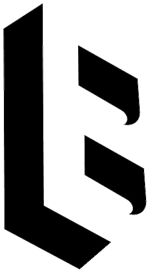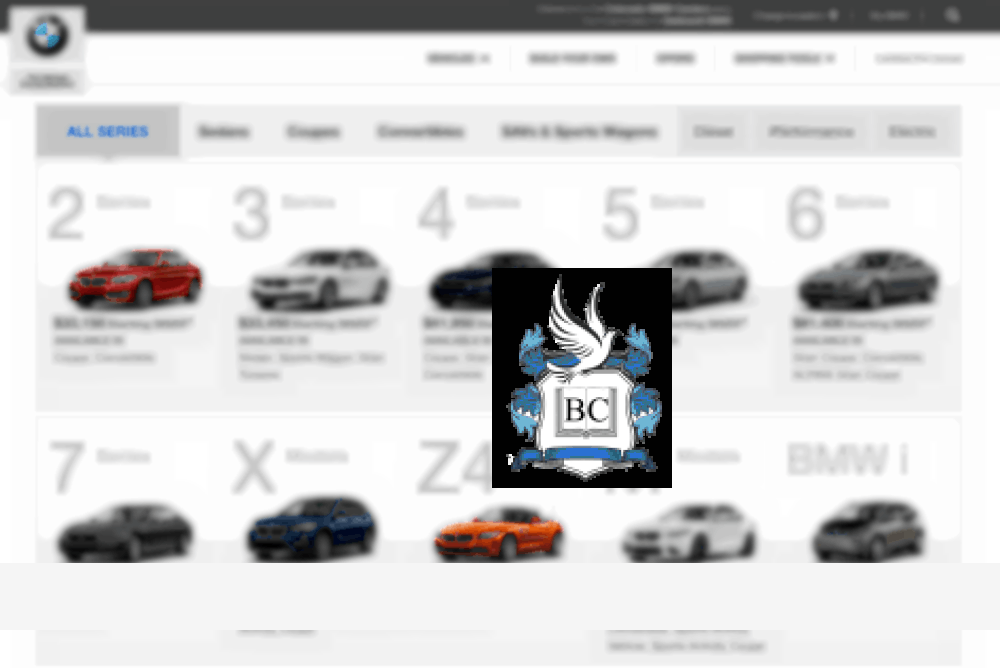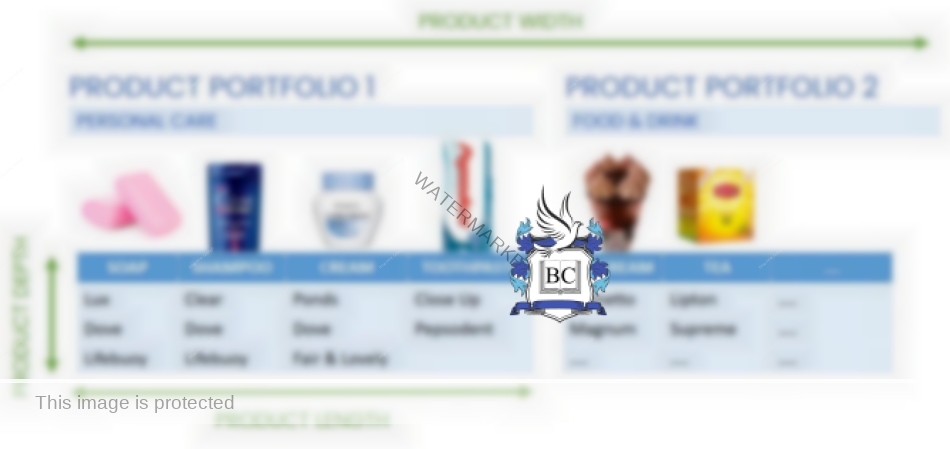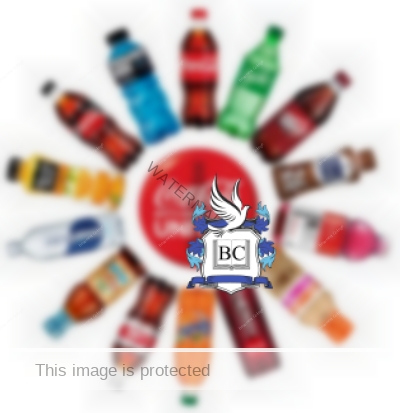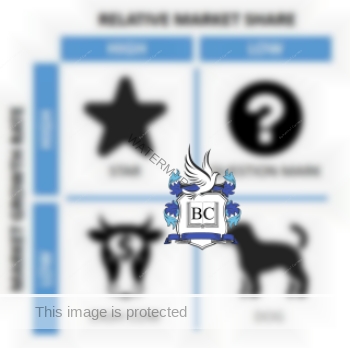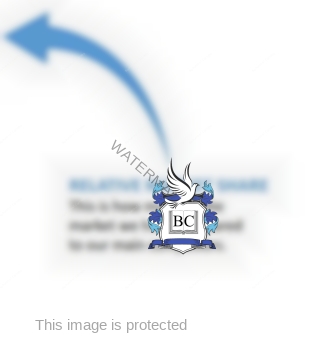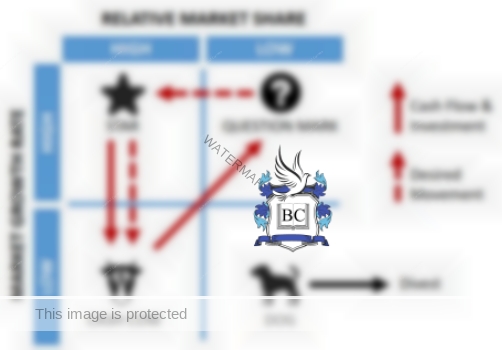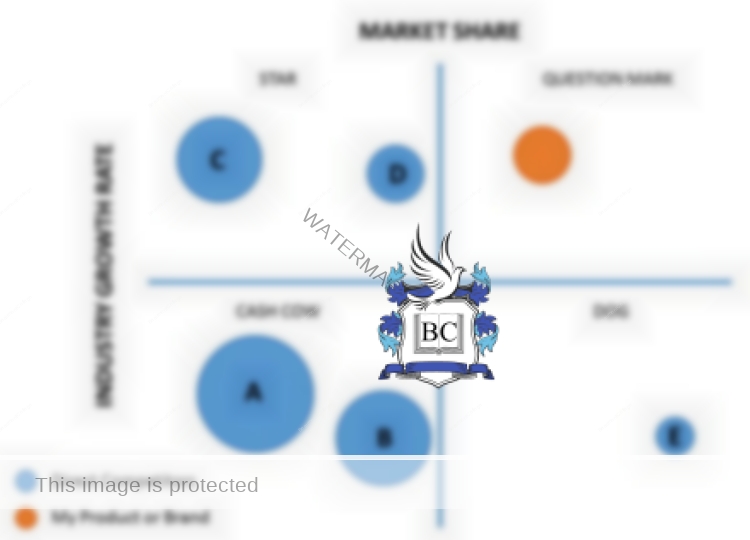2. Developing Products
Mobile View
The mobile phone view is good for revision but for the best learning experience we recommend larger screens.
01
KEY MARKETING CONCEPTS
02
DEVELOPING PRODUCTS
03
MARKET
ANALYSIS
04
SUPPLY CHAIN MANAGEMENT
05
PRICING STRATEGIES
06
SALES MANAGEMENT
LEARNING OUTCOMES
- By the end of this lesson you should be able to apply the following concepts to your business of interest, and for consultants discuss them with your clients or students.
- The 3 levels of a product & how they create customer value.
- The difference between product features & benefits.
- Developing product lines with line stretching & filling.
- Managing product lines and product portfolios.
- The BCG matrix to manage our portfolio and resources.
- The 5 stages of new product development & innovation.
- The 8 functions of product packaging & labelling.
CONTENTS
- 2.1 The levels of a product
- 2.2 Product Features & Benefits
-
2.3 Product Line Development
- 2.4 Product Portfolios
- 2.5 Boston Consulting Matrix
- 2.6 New Product Development
- 2.7 Packaging & Labeling
- 2.1 The levels of a product
- 2.2 Product Features & Benefits
- 2.3 Product Line Development
- 2.4 Product Portfolios
- 2.5 Boston Consulting Matrix
- 2.6 New Product Development
- 2.7 Packaging & Labeling
2.1 THE 3 PRODUCT LEVELS
WORKBOOK
Page 12 (Exercise 2a)
Every product has three levels that define its value to the customer and helps us meet consumer’s needs, wants & demand.
This 3 layer approach enhances customer satisfaction, builds loyalty, and differentiates products in competitive markets, ensuring long-term success. By aligning all three levels, companies can create meaningful and long-lasting value for their customers.

Core benefit
The core benefit is the main reason a customer buys the product. It addresses the primary need or solves a problem. For example, the core benefit of a smartphone is communication, enabling calls, texts, and internet access.

Actual Product
The actual product includes the tangible elements customers interact with. This includes design, quality, features, branding, and packaging. In the case of a smartphone, the actual product is the physical device with its touchscreen, camera, and operating system.

Augmented Product
The augmented product provides additional services or enhancements that create added value, such as warranties, technical support, or free upgrades. For smartphones, this could be a year of free cloud storage or access to a 24/7 customer care hotline.
The core benefit is the fundamental reason a customer buys the product. It addresses the primary need or solves a problem. For example, the core benefit of a smartphone is communication, enabling calls, texts, and internet access.
The actual product includes the tangible elements customers interact with. This includes design, quality, features, branding, and packaging. In the case of a smartphone, the actual product is the physical device with its touchscreen, camera, and operating system.
The augmented product provides additional services or enhancements that create added value, such as warranties, technical support, or free upgrades. For smartphones, this could be a year of free cloud storage or access to a 24/7 customer care hotline.
This 3 layer approach enhances customer satisfaction, builds loyalty, and differentiates products in competitive markets, ensuring long-term success. By aligning all three levels, companies can create meaningful and long-lasting value for their customers.

CORE BENEFIT
Instant and easy communication
is the core benefit the user utilizes
when using the mobile phones.
ACTUAL PRODUCT
These are the tangible product the consumer
uses such as the phone, laptop, and TV
AUGMENTED PRODUCT
These are the additional goods or services
that add value to the actual product
such as Apple Care.
AT EACH LEVEL WE ADD MORE VALUE
CORE BENEFIT
THE BENEFIT THE CONSUMER GETS FROM USING THE PRODUCT
This is the need that’s being satisfied (remember needs, wants & demand). A good way to identify the core benefit is to ask “why is the customer buying this product?” For example, the core benefit of a mobile phone is to provide mobile and instant communications and connectivity with other people and services.
THIS IS THE MINIMUM REQUIREMENT TO COMPETE IN A THE MARKET
ACTUAL PRODUCT
THE PHYSICAL GOODS OR SERVICE THAT CONSUMERS USE
Marketers turn the core benefit (previous tab) into an actual product by developing product features & designs, brand name, packaging and so on. For example, with our mobile phone the actual product includes the phone’s dimensions, colors, screen size, processor speed, storage space and so on.
THE ACTUAL PRODUCT DELIVERS THE CORE BENEFIT
AUGMENTED PRODUCT
ADDITIONAL PRODUCTS TO ADD VALUE & DIFFERENTIATE OUR BRAND
With so many brands simply copying each others’ features, the augmented product allows us to really stand out and provide additional VALUE and enhance SATISFACTION and LOYALTY.
FOR EXAMPLE: With our mobile phone the augmented products include the warranty, online forums, and after-sales service. But don’t just stop there, the opportunities for augmented products is almost limitless.
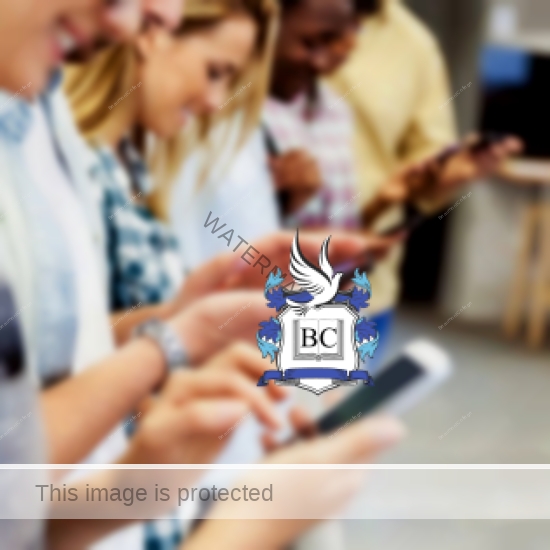
CORE BENEFIT
THE BENEFIT THE CONSUMER GETS FROM USING THE PRODUCT
This is the need that's being satisfied (remember needs, wants & demand). A good way to identify the core benefit is to ask “why is the customer buying this product?” For example, the core benefit of a mobile phone is to provide mobile and instant communications and connectivity with other people and services.
THIS IS THE MINIMUM REQUIREMENT TO COMPETE IN A THE MARKET
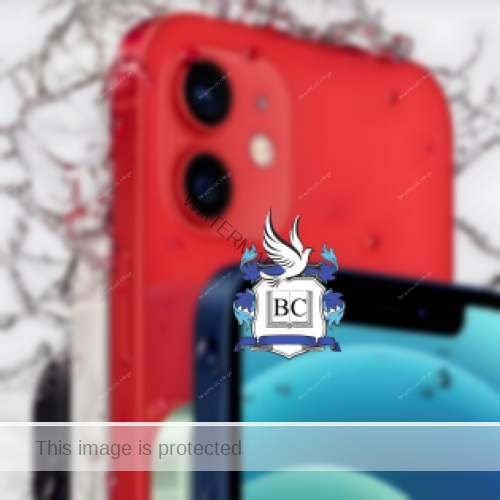
ACTUAL PRODUCT
THE PHYSICAL GOODS OR THE SERVICE THAT CONSUMERS USE
Marketers turn the core benefit (previous tab) into an actual product by developing product features & designs, brand name, packaging and so on. For example, with our mobile phone the actual product includes the phone’s dimensions, colors, screen size, processor speed, storage space and so on.
THE ACTUAL PRODUCT DELIVERS THE CORE BENEFIT
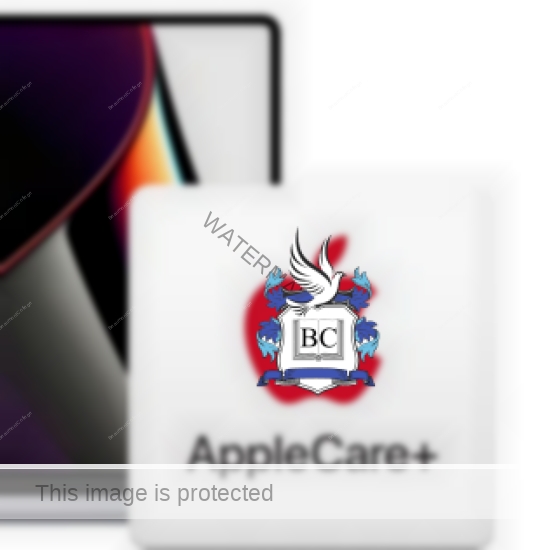
AUGMENTED PRODUCT
ADDITIONAL PRODUCTS TO ADD VALUE & DIFFERENTIATE OUR BRAND
With so many brands simply copying each others' features, the augmented product allows us to really stand out and provide additional value and enhance satisfaction and loyalty.
FOR EXAMPLE: With our mobile phone the augmented products include the warranty, online forums, and after-sales service. But don't just stop there, the opportunities for augmented products is almost limitless.

MANY COMPANIES DON'T
AUGMENT THEIR PRODUCT WELL
LOOK AT COMPANIES WHERE YOU LIVE
You may notice that many brands (even big ones) often just copy each others’ ACTUAL PRODUCT features but are pretty terrible at differentiating themselves across any other dimension. Here are a few examples.
CAFE INDUSTRY
Most offer similar coffee, similar sizes, similar food, similar prices, with similar service, but very few differences that provide meaningful differentiation.
AUTOMOBILE INDUSTRY
Advertising typically show people driving on beaches, through mountain ranges or exciting cities, while showcasing all the same features (park assist, seats, sound systems etc).
MANY COMPANIES
DON'T AUGMENT THEIR PRODUCT WELL
MANY COMPANIES DON'T AUGMENT PRODUCTS WELL
LOOK AT COMPANIES WHERE YOU LIVE
You may notice that many brands (even big ones) often just copy each others’ ACTUAL PRODUCT features but are pretty terrible at differentiating themselves across any other dimension. Here’s a couple of examples.
CAFE INDUSTRY
Most offer similar coffee, in similar sizes, with similar food, at similar prices, similar seating, but very few differences that provide meaningful differentiation.
AUTO INDUSTRY
All advertising typically shows the product features such as park assist, upholstery, sound systems etc. with people driving on beaches, through mountain ranges or city streets.
WHAT ABOUT YOUR COMPANY?
For your company of interest can you think of any augmented product ideas that their customers would love? Can they provide better service, offer useful information, or make the experience even more awesome in any way?
ASK YOURSELF, WHAT WOULD YOUR CUSTOMERS FIND AMAZING USEFUL INFORMATIVE SURPRISING ?
LINKING PRODUCT LEVELS WITH NEEDS, WANTS & DEMAND
See how the 3 levels of a product help us meet consumer needs, wants and demand (from the last lesson).
7.30 MINS
2.2 PRODUCT FEATURES & BENEFITS
WORKBOOK
Page 13 (Exercise 2b)
To produce great products we must consider all the features & benefits that will add VALUE to the consumer.
It is by considering our product features and consumer benefits that we start to link the actual and augmented product (above) with consumer needs, wants & demand (last lesson). This lies at the heart of the marketing orientation – putting the customer needs first and finding out what will provide the greatest benefit to them (to drive satisfaction and loyalty).
FEATURES
ATTRIBUTES THE PRODUCT HAS
Example: Screen resolution, size, 5G, durable materials, weight, interface, operating system, camera and so on. These are all product features.
BENEFITS
FEATURES THE CONSUMER WANTS
Example: Fast 5G to for streaming movies. This feature may be an important benefit to a teenager, but possibly not to a retiree. For the retiree simple navigation may be a greater benefit.
FEATURES
ATTRIBUTES THE PRODUCT HAS
Example: Screen resolution, size, 5G, durable materials, weight, interface, operating system, camera and so on. These are all product features.
BENEFITS
FEATURES THE CONSUMER WANTS
Example: Fast 5G to for streaming movies. This feature may be an important benefit to a teenager, but possibly not to a retiree. For the retiree simple navigation may be a greater benefit.
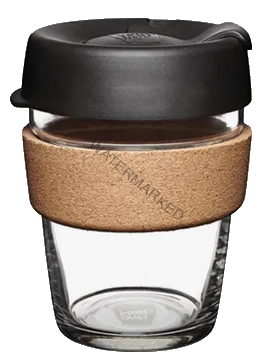
FEATURES
Secure Fitting Lid
Sealable Drink Hole
Cork Strap
Thicker Glass
BENEFITS
Won’t spill, making it good for travel.
Keeps the coffee warm when not drinking. Easy to drink from.
Cork insulation protects fingers from being burned by hot drink.
Insulates the beverage, and makes the cup more durable.
THINKING IN TERMS OF BENEFITS CAN STIMULATE INNOVATION
Thicker glass (the feature) is just thicker glass and no ideas flow from that. But thinking in terms of the benefit of thicker glass (durability and insulation) could lead to product innovation ideas such as using a more durable material (aluminium), or extending the cork sleeve for protection as well as insulation) and so forth.
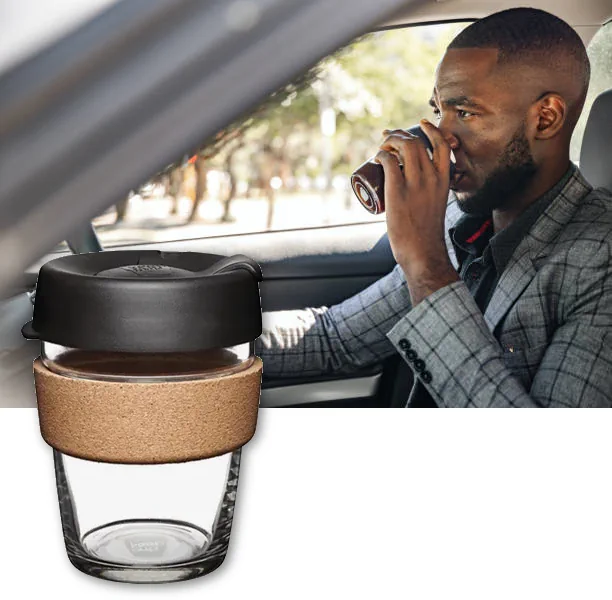
FEATURES
- Secure Fitting Lid
- Sealable Drink Hole
- Protective Cork Strap
- Thicker Glass
BENEFITS
- Won't spill - good for travel
- Easy mess free drinking
- Protects fingers
- Keeps the drink warm
2.3 PRODUCT DEVELOPMENT
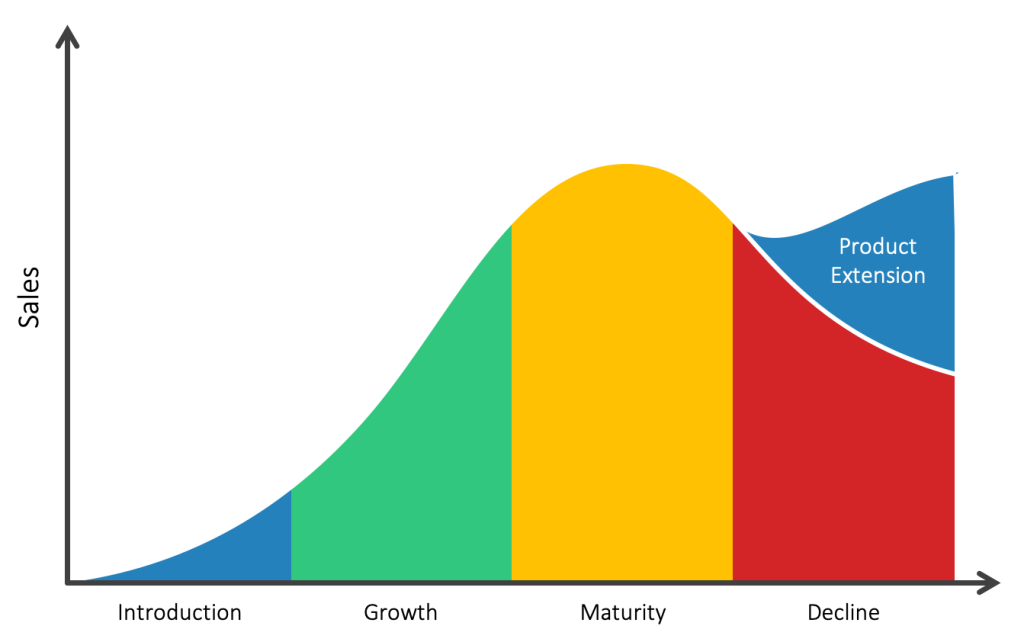
As seen in lesson 1 all products go through a product life-cycle.
To stay competitive we continually develop and improve our product features & benefits. This creates new product lines.
Below we see BMW’s product lines. Their product range offers different features & benefits to meet different consumer needs and wants from suburban families, to outdoor adventurers, or the sporty set.
To stay competitive we continually develop and improve our product features & benefits. This creates new product lines.
Below we see BMW’s product lines. Their product range offers different features & benefits to meet different consumer needs and wants from suburban families, to outdoor adventurers, or the sporty set.
Product line extensions involve adding new product varieties to meet different consumer needs & wants.
This helps use (leverage) the existing brand name to target new customers or react to new trends.
Examples include a soft drink brand introducing new flavors, or a smartphone brand releasing models with new features.
Product line extensions can drive sales, enhance loyalty and capture more customers.
Product line extensions involve adding new variants to an existing product line to cater to different consumer needs or preferences. This strategy helps leverage the established brand while targeting new market segments or addressing emerging trends.
Examples include a soft drink brand introducing new flavors or a smartphone company releasing models with varying features. Product line extensions can drive sales, enhance brand loyalty, and maximize market reach.
1. LINE STRETCHING
ADDING ENTIRE NEW PRODUCT LINES
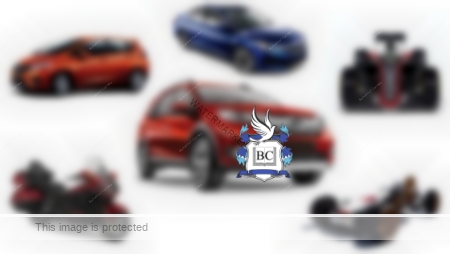
FOR EXAMPLE: Honda’s range of small cars for younger drivers, larger family SUVs, prestige cars, motorcycles, scooters, jet skis, boats, motors, robotics, racing cars, lawn mowers and so forth.
2. LINE FILLING
ADDING NEW VARIATIONS TO EXISTING LINES
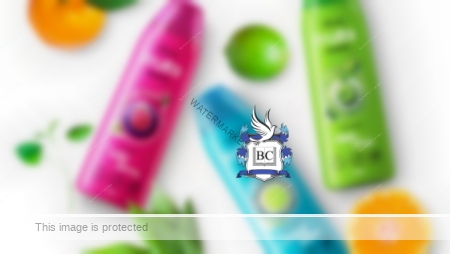
FOR EXAMPLE: Offering different colors, scents, and features of the same product. This can help make more sales, stop competitors from entering the market, or to increase our presence in market.
2.4 PRODUCT PORTFOLIOS
WORKBOOK
Page 13 (Exercise 2c)
AS OUR PRODUCT RANGE GROWS WE DEVELOP PRODUCT PORTFOLIOS (AND A PRODUCT MIX).
A product portfolio’s width refers to the number of product lines (called portfolios) a company offers. Length is the total number of products across all lines in a single portfolio. Depth describes the variety within a single product line, such as different sizes, flavors, or features. Consistency measures how closely related the product lines are in terms of function, target market, or production methods.
Creating product portfolios (with line stretching and filling) allows companies to target new customer segments, cater to diverse preferences, and increase market share (getting more customers) by offering variations of existing products.
There are also managerial benefits such as increasing the brand presence (more visible on shop shelves), and boosting revenue while using existing resources, such as manufacturing and distribution systems (see lesson 4).
TO DEVELOP OUR PRODUCT MIX WE CONSIDER 4 THINGS
- Product Line Width
- Product Line Depth
- Product Line Length
- Product Line Consistency
Sony’s product mix below is made up portfolios such as Electronics, Entertainment (e.g. games), Pictures (e.g. movies), and Financial Services. Let’s look at an example.
PRODUCT WIDTH
PRODUCT RANGE ACROSS ALL PORTFOLIOS
Sony portfolios include:
Games
Televisions
Computing
Music
PRODUCT LENGTH
PRODUCTS LINES IN EACH PORTFOLIO
Sony Computing Lines
Speakers
Monitors
Printers
Accessories
PRODUCT DEPTH
THE PRODUCTS IN EACH PRODUCT LINE
Sony Printer Lines
LASER
PRINTERS
inkjet
printers
Commercial Printers
Medical
Printers
PRODUCT CONSISTENCY
THE CONSISTENCY AMONG PORTFOLIOS
Sony’s portfolio has high consistency across all their portfolios.
(They do not have foods or home wares as these are not consistent)
PRODUCT WIDTH
THE PRODUCT RANGE
ACROSS ALL PORTFOLIOS
Sony portfolios include:
- COMPUTING
- TELEVISIONS
- GAMES
- MUSIC
PRODUCT LENGTH
THE PRODUCT LINES IN
EACH PORTFOLIO
Sony computing lines:
- PRINTERS
- SPEAKERS & AUDIO
- MONITORS
- ACCESSORIES
PRODUCT DEPTH
THE PRODUCTS IN
EACH PRODUCT LINE
Sony printer depth:
- LASER PRINTERS
- INKJET PRINTERS
- COMMERCIAL PRINTERS
- MEDICAL PRINTERS
PRODUCT CONSISTENCY
THE CONSISTENCY AMONG ALL THEIR PRODUCT PORTFOLIOS
Sony’s products have high consistency across all their portfolios.
(They do not have food or home wares as these are not consistent)
notice HONDA’S product width, length, depth & consistency
HONDA'S PRODUCT MIX DEVELOPMENT
THROUGH THE YEARS
HONDA PRODUCT MIX THROUGH THE YEARS
Watch this video that takes us through Honda's product development through the years.
HONDA PRODUCT MIX
2 Minutes
WE CAN ORGANISE OUR PORTFOLIOS INTO STRATEGIC BUSINESS UNITS
Strategic Business Units (SBUs) are independently managed product groups. They can be a product line, a specific brand, or targeting a particular group of customers or geographical location.
CHARACTERISTICS OF SBUs
- Each SBU requires its own planning.
- Each SBU has its own goals & objectives.
- Each SBU has its own set of competitors.
FOR EXAMPLE: Coca-Cola have different drinks for different regions of the world, each of these can be treated as independent SBUs.
SBUs FOR SMALL BUSINESS
Smaller businesses can use SBUs
EXAMPLE: After increasing demand for organic products a fruit shop started a new SBU for their organic range.
Now they can develop a new supply chain, and advertising and marketing that targets this new market.
The new SBU may have its own sales person knowledgeable suppliers, warehousing, and accounting that is separate from their non organic produce SBUs.
2.5 BOSTON CONSULTING GROUP MATRIX
WORKBOOK
Page 14 (Exercise 2d)
THE BCG MATRIX IS USED TO ANALYSE & MANAGE OUR PRODUCT PORTFOLIO.
Some companies manage large portfolios with as many as 100 products or more. This can make it difficult to decide which products to invest in and which to stop selling (divest). To help make these decisions a common tool is the BCG Matrix.
The BCG Matrix is a strategic tool used to evaluate a company’s product portfolio based on market growth and market share. It classifies products into four categories: Stars (high growth, high share), Cash Cows (low growth, high share), Question Marks (high growth, low share), and Dogs (low growth, low share).
This matrix helps businesses allocate resources effectively and make strategic decisions about product development and investment.
BCG MATRIX OVERVIEW
BCG MATRIX OVERVIEW
Before we look at the BCG Matrix in more depth watch this video first to see a brief overview.
NOTE: If you don't know the market share of your products that's OK, just estimate. In the business world your company has this information (see workbook).
4 Minutes
NOTE: If you don't know the market share of your products that's OK, just estimate for now.
In the business world your company will provide this information, or you can buy it (see workbook for more information).
Market Growth Rate
This is how quickly the market is growing and indicates a product’s future potential.
FOR EXAMPLE
5G phones are in a high growth industry with sales increasing (the growth stage in the PLC in last lesson).
market Share
Relative market share represents how much of the market we have compared to our competitors.
FOR EXAMPLE
iPhone had 55% of the mobile phone market in Australia, 50% of the US market, and 14% of the global market.
INDUSTRY GROWTH RATE
Market growth represents how quickly the market is growing and can indicate a product’s future potential.
FOR EXAMPLE
5G phones are in a market with high growth with new competitors entering the market (the growth stage in the PLC in last lesson).
RELATIVE MARKET SHARE
Relative market share represents the proportion of the market we have relative to our closest competitors.
FOR EXAMPLE
Apple iPhone had 55% of the mobile phone market in Australia, 50% of the US market, and 14% of the global market.
1. INDUSTRY GROWTH RATE
Market growth represents how quickly the market is growing and can indicate a product’s future potential.
FOR EXAMPLE: 5G mobile phones are in a market with high growth with new competitors entering the market (remember the growth stage in the PLC from the last lesson).
2. RELATIVE MARKET SHARE
Relative market share represents the proportion of the market we have relative to our closest competitors.
FOR EXAMPLE: At the time of writing, Apple iPhone had 55% of the mobile phone market in Australia, 50% of the US market, and 14% of the global market.
ONCE WE KNOW THE INDUSTRY GROWTH & OUR MARKET SHARE WE CAN ADD OUR PRODUCTS TO THE MATRIX
ONCE WE KNOW THE INDUSTRY GROWTH & OUR MARKET SHARE WE CAN ADD OUR PRODUCTS TO THE MATRIX
HIGH INDUSTRY GROWTH
Stars are in the introduction & growth stages of the PLC. They make money but need more investment than cash cows and a great deal of promotion.
If we can capture and keep our market share the Star becomes a Cash Cow as the market matures.
LOW INDUSTRY GROWTH
Cash Cows make regular and reliable income, and are in the growth & maturity stages of the PLC.
The funds from Cash Cows should be invested into Stars to support their growth, or into the development of Question Marks.
HIGH INDUSTRY GROWTH
Question Marks are in the introduction stage of the PLC, but can become Stars if they can gain enough market share.
Question marks do not always succeed and even after much investment may struggle to gain market share and become Dogs.
LOW INDUSTRY GROWTH
Generally companies divest (sell) dogs as they are not profitable, and are unlikely to become due to the low market growth. However, this is not always the case. A change of management, or entering new markets may reinvigorate dogs.
STARS
HIGH MARKET SHARE
HIGH INDUSTRY GROWTH
Stars are both cash generators and cash users. They require more investment than cash cows as they often require a great deal of promotion. If we can capture and keep our market share the Star becomes a Cash Cow as the market matures and settles.
CASH COWS
HIGH MARKET SHARE
LOW INDUSTRY GROWTH
Cash Cows products are well established and generate reliable revenue. The funds from Cash Cows should be invested into Stars to support their growth, or into the development of Question Marks.
QUESTION MARKS
LOW MARKET SHARE
HIGH INDUSTRY GROWTH
They have potential to become Stars, which may later become Cash Cows if they can gain enough market share. Question marks do not always succeed and even after much investment may struggle to gain market share.
DOGS
LOW MARKET SHARE
LOW INDUSTRY GROWTH
Generally companies divest (sell) dogs as they are not profitable, and are unlikely to become due to the low market growth. However, this is not always the case. A change of management, or entering new markets may reinvigorate dogs.
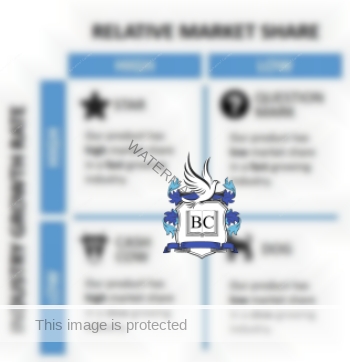

We use money from the Cash Cows to invest in Question Marks to try and capture new market share.

If Question Marks capture market share they become Stars. As sales slow down (maturity stage), but our market share remains strong, Stars become Cash Cows.

If the Question Mark don't capture market share, they become Dogs and we may stop selling them (divest), or modify the product (e.g. improve the features).
- We use money from the Cash Cows to invest in Question Marks to try and capture new market share in new and emerging markets.
- If Question Marks capture market share they become Stars. As sales slow down (maturity stage), but our market share remains strong, they become Cash Cows.
- If the Question Mark fails to capture market share, they become Dogs and we may decide to stop selling them (divest).
We can use the matrix in several ways
BRAND COMPARISONS: We can plot our brand and our competitors (Figure 1). In this example our brand is a “Question Mark” suggesting we are a new brand to the market.
PRODUCT COMPARISONS: If we have many products in our portfolio we can plot all our products on a BCG matrix to decide where to invest our time and money, or divest any product lines.
TIP: In Figure 1 the size of the circles represents each company’s market share (larger circles mean larger market share).
WHAT ABOUT YOUR COMPANY?
For your company of interest can you identify any dogs they should consider removing? Or perhaps they have some great new products (question marks) that need to be promoted more effectively to turn them into shining stars?
You've learnt a lot! Before we move on let's recap what you know...
- As products move through the life-cycle we must develop new products
- To develop new products we do product line stretching & line filling
- Line stretching & filling creates a product mix
- We arrange our product mix in product portfolios
- We manage product portfolios with the BCG matrix
2.6 new product development

WORKBOOK
Page 16 (Exercise 2e)
New product development involves the exploration, generation, development, and commercialization of new ideas that can meet the changing needs and preferences of customers.
The goal is to create products customers will desire, and that can be produced and sold profitably. This process involves researching and identifying consumer needs and wants, product design and development, testing, and marketing.
2 Ways TO ACQUIRE new productS

Acquisition / BUYING
Buying a product, a licence, or a patent from somebody else. It's important to ensure that the acquisition is consistent with your portfolio.
1. ACQUISITION: This is buying a product, a licence, or a patent from somebody else. Here it is important to ensure that the acquisition is suitable for the brand’s overall portfolio.

DEVELOP OUR OWN PRODUCTS
This can be incremental development (modifications to existing products), or radical innovation creating entirely new products.
2. NEW PRODUCT DEVELOPMENT: This is when a company develops their own new products. This can occur as incremental development (modifications to existing products), or radical innovation which is entirely new products. We will focus on this method in this section.
- 5 PRODUCT DEVELOPMENT STAGES
- 1. Developing New Ideas
- 2. Idea Screening
- 3. Concept Development & Feedback
- 4. Product Development
- 5. Market Commercialisation
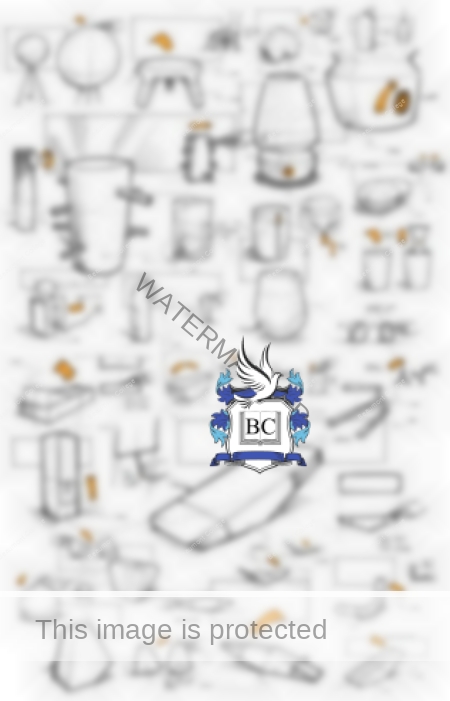
NOTE: We cover these 5 stages in more advanced subjects. For now just familiarise yourself with the 5 stages.
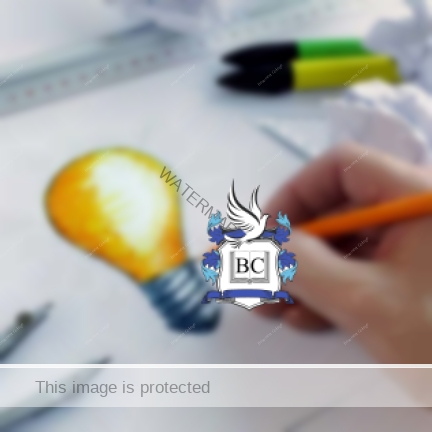
Developing New Ideas
INTERNAL IDEA GENERATION are ideas from within the firm. They can come from Research & Development (R&D) departments, employee ideas, or customer suggestions. Sometimes companies run competitions for new ideas (e.g. Lego Mindstorm Competition).
EXTERNAL IDEA GENERATION are ideas from outside the company such as suppliers. Competitors also can provide new ideas by watching what they produce and how well they sell. Finally, firms can consult with external experts and consulting agencies who conduct market research and can undertake product development for the firm.

IDEA SCREENING
From the ideas generated in Stage 1 we make a short list of the best ideas. Because the new product development process can be expensive we often begin with written product descriptions first - then only the best ideas are taken to the next stages.
PRODUCT DESCRIPTIONS DESCRIBE:
- The Product Features
- The Value Proposition
- Proposed Target Markets
- Estimated Price
- Estimated Market Size
NOTE: We cover the last 4 concepts later in the course. For now just think about the product itself.
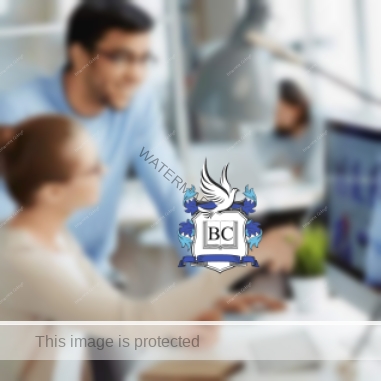
CONCEPT DEVELOPMENT
Once we've found the best ideas we develop a product concept for testing. This can be written or physical. The written product concept can now become more detailed, and include specific technical requirements, manufacturing requirements, proposed pricing and so forth. The physical prototype may be more expensive if it involves manufacturing. Once developed the prototype can be presented to consumers to get feedback.
PRODUCT CONCEPT ANALYSIS
This video shows a fast and simple way to get feedback from consumers about a range of considerations.
1.20 MINS
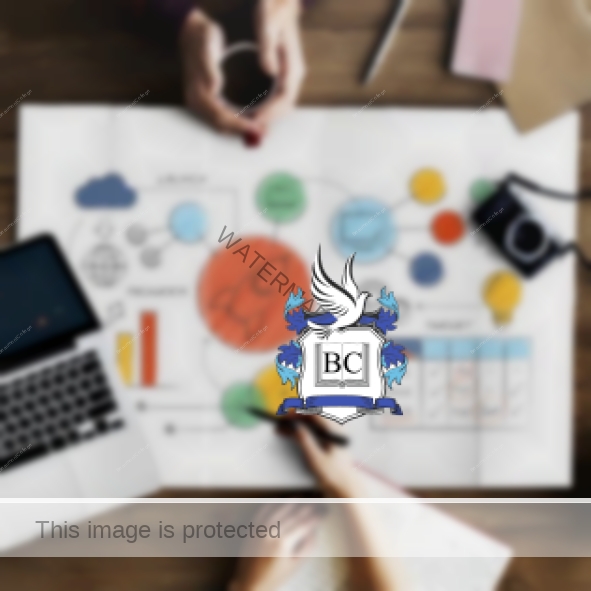
PRODUCT DEVELOPMENT
If the feedback from stage 3 is positive, the company does accurate production costings, development times, sales and profit projections. This ensures that we can produce the product with the required attributes and standards, and get a better understanding of production times, and the resources we will need to take the product to market.
(COVERED IN LESSON 3)

MARKET COMMERCIALIZATION
Here the organization introduces the product to the market for an initial product launch with the support of full marketing activities. Refinements to the marketing strategy can be made based on market feedback.
If the initial launch is successful the company can move to full distribution, officially launching the product across all its markets as the newest addition to its product portfolio.
As part of the commercialization process we consider:
WHEN TO RELEASE
If the product will replace old products we want to sell the old products first. If there are seasonal factors (as with tourism or travel), then launch the new product in time for consumers to include in their decision making process.
WHERE TO RELEASE
Launching a new product is expensive so companies often roll out new products gradually by regions, states, or country. This allows the firm to select the areas it feels will have the most early success, and keeps costs manageable.
1. DEVELOPING IDEAS
INTERNAL IDEA GENERATION are ideas from within the firm. They can come from Research & Development (R&D) departments, employee ideas, or customer suggestions. Sometimes companies run competitions for new ideas (e.g. Lego Mindstorm Competition).
EXTERNAL IDEA GENERATION are ideas from outside the company such as suppliers. Competitors also can provide new ideas by watching what they produce and how well they sell. Finally, firms can consult with external experts and consulting agencies who conduct market research and can undertake product development for the firm.
2. IDEA SCREENING
From the ideas generated in Stage 1 we make a short list of the best ideas. Because the new product development process can be expensive we often begin with written product descriptions first – then only the best ideas are taken to the next stages.
PRODUCT DESCRIPTIONS DESCRIBE:
- The Product Features
- The Value Proposition
- Proposed Target Markets
- Estimated Price
- Estimated Market Size
3. CONCEPT DEVELOPMENT
Once we’ve found the best ideas we develop a product concept for testing. This can be written or physical.
The written product concept can now become more detailed, and include specific technical requirements, manufacturing requirements, proposed pricing and so forth.
The physical prototype may be more expensive if it involves manufacturing. Once developed the prototype can be presented to consumers to get feedback.
4. PRODUCT DEVELOPMENT
If the feedback from stage 3 is positive, the company does accurate production costings, development times, sales and profit projections. This ensures that we can produce the product with the required attributes and standards, and get a better understanding of production times, and the resources we will need to take the product to market.
(COVERED IN LESSON 3)
5. PRODUCT LAUNCH
Here the organization introduces the product to the market for an initial product launch with the support of full marketing activities. Refinements to the marketing strategy can be made based on market feedback.
If the initial launch is successful the company can move to full distribution, officially launching the product across all its markets as the newest addition to its product portfolio.
As part of the commercialiSation process we consider:
WHEN TO RELEASE
If the product will replace old products we want to sell the old products first. If there are seasonal factors (as with tourism or travel), then launch the new product in time for consumers to include in their decision making process.
WHERE TO RELEASE
Launching a new product is expensive so companies often roll out new products gradually by regions, states, or country. This allows the firm to select the areas it feels will have the most early success, and keeps costs manageable.
THE PRODUCT DEVELOPMENT
PROCESS IN ACTION
To see the product development process in action watch this video from Gravely.
PRODUCT DEVELOPMENT IN ACTION
3.45 Minutes
LET'S LOOK AT THE PRODUCT DEVELOPMENT PROCESS IN ACTION
2.7 packaging & labeling
WORKBOOK
Page 18 (Exercise 2f)
PRODUCT PACKAGING AND LABELING ARE OFTEN OVERLOOKED WHEN CONSIDERING PRODUCT DEVELOPMENT. BUT BOTH ACTIVITIES ARE ESSENTIAL.

PRODUCT PACKAGING
Packaging is more than just a container. It includes the overall design, look and feel of the package, it offers protection to the product, can aid with product use, and serve as a means of advertisement and promotion by creating brand identity and awareness. Let’s look at some of the most important packaging considerations.
Packaging is more than just a container. It includes the overall design, look and feel of the package, it offers protection to the product, can aid with product use, and serve as a means of advertisement and promotion by creating brand identity and awareness.
Let’s look at some of the most important packaging considerations.
DIFFERENTIATION
Packaging can help a product stand out and be eye-catching on the shelves. Items that are hard to differentiate.
For example wine is often bought based just on how attractive the packaging is, especially by consumers who are not familiar with the differentiating features of wine.
Also items that have limited quality differences (such as tissues or salt), often use clever packaging to boost sales.
PROTECTION
This can be important for delicate items that are fragile such as glass, or expensive items such as computer components.
If you’re going to sell your product overseas, where a lot of transportation can occur, you may need to consider additional protective packaging options.
This will help reduce the likelihood of product returns (from damaged goods), and could also decrease your insurance costs.
EASE OF USE
The best packaging provides easy product access and enhances the use of the product. Examples include resealable bags for freshness and to avoid spillage, or molded spouts for easing pouring.
Some products are hard to open with hard to cut plastic coverings that leave sharp edges. Packaging may need to be tamper proof such as pharmaceuticals, chemicals or harmful products, or to prevent access by children.
SUSTAINABILITY
With companies increasingly including more corporate social responsibility (CSR), packaging is an important area for contribution.
This can be by using less packaging, biodegradable packaging, recycling, or lighter packaging (for reduced transport impact) and so forth.
Many investors will only support companies that follow strict sustainability procedures.
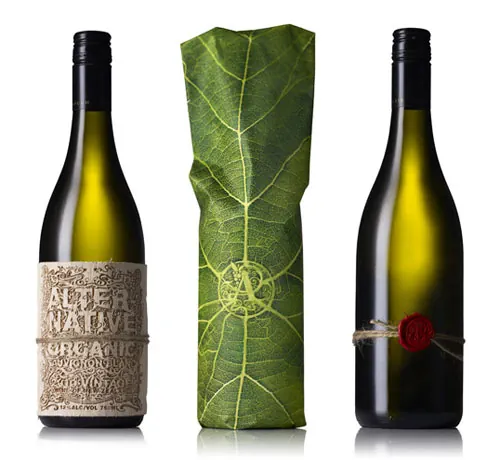
DIFFERENTIATION
Packaging can help a product stand out and be eye-catching on the shelves. Items that are hard to differentiate. For example wine is often bought based just on how attractive the packaging is, especially by consumers who are not familiar with the differentiating features of wine. Also items that have limited quality differences (such as tissues or salt), often use clever packaging to boost sales.

PROTECTION
This can be important for delicate items that are fragile such as glass, or expensive items such as computer components. If you're going to sell your product overseas, where a lot of transportation can occur, you may need to consider additional protective packaging options.
This will help reduce the likelihood of product returns (from damaged goods), and could also decrease your insurance costs.
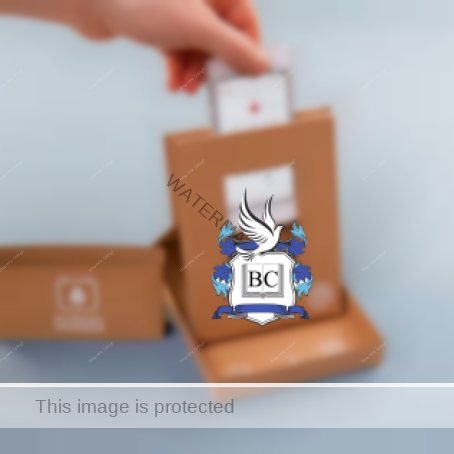
EASE OF USE & SAFETY
The best packaging provides easy product access and enhances the use of the product. Examples include resealable bags for freshness and to avoid spillage, or molded spouts for easing pouring.
Some products are hard to open with hard to cut plastic coverings that leave sharp edges. Packaging may need to be tamper proof such as pharmaceuticals, chemicals or harmful products, or to prevent access by children.
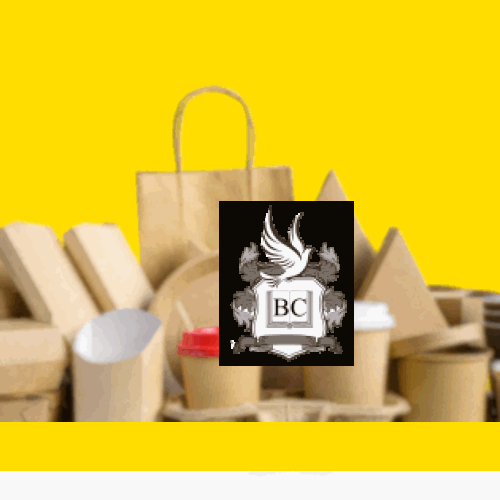
SUSTAINABILITY
With companies increasingly including more corporate social responsibility (CSR), packaging is an important area for contribution. This can be by using less packaging, biodegradable packaging, recycling, or lighter packaging (for reduced transport impact) and so forth.
Many investors will only support companies that follow strict sustainability procedures.
How packaging affects sales
Watch this case study on the impact packaging and design has on consumer awareness and sales.
4.30 Minutes
HOW PACKAGING AFFECTS SALES
Watch this case study on the impact packaging and design has on consumer awareness and sales.
PRODUCT LABELING
Labeling helps manufacturers communicate important product information. Many times this information is also a legal requirement.
FOR EXAMPLE, labeling presents information about the contents (e.g. the actual product & accessories), features, price, date of production, expiry date, weight, and storing or disposing instructions.
Let’s See 4 Main Labeling Functions Below.
Labeling helps manufacturers communicate important product information. Many times this information is also a legal requirement.
For example, labeling presents information about the contents (e.g. the actual product & accessories), features, price, date of production, expiry date, weight, and storing or disposing instructions.
All this information helps customers decide whether or not the product meets their needs, wants and demand.
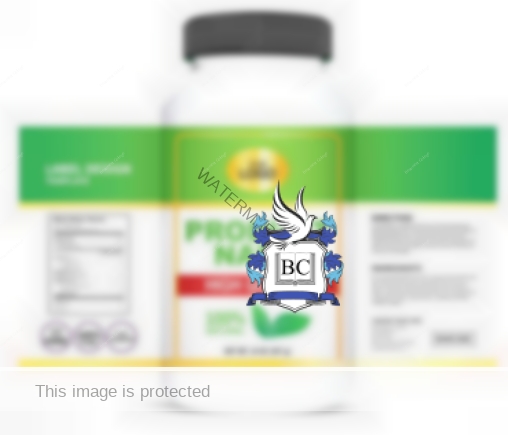

AWARENESS & ATTENTION
Juts like packaging the label should be creative to help products to stand out and gain the consumer's attention. Persuasive attributes such as "low fat" or "vitamin enriched," may be prominently displayed to promote the product. And of course, your company name and logo should feature clearly.
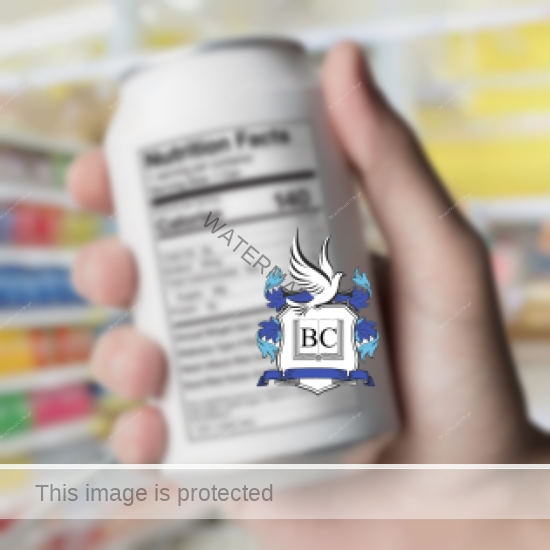
PRODUCT INFORMATION
The label should provide useful and relevant product information and instructions for use. Many products are required by law to carry a complete list of their ingredients. This information is extremely important so that consumers can make informed decisions (e.g. allergies), nutritional labeling, and best before dates.
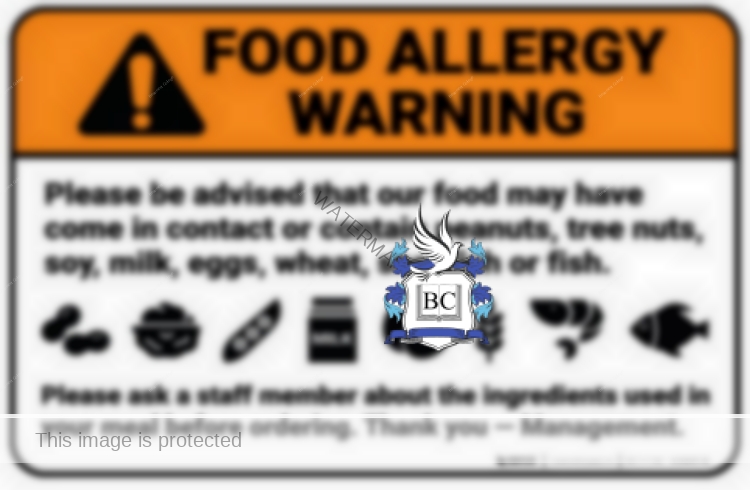
PRODUCT WARNINGS
If your product may be hazardous to health this needs to be mentioned. It may be that the product is toxic (such as some chemicals), cause allergies, or it may be harmful to children if swallowed (small items a child may choke on). Other common warnings may include products that involve heat (such as irons), or electricity (such as computers).
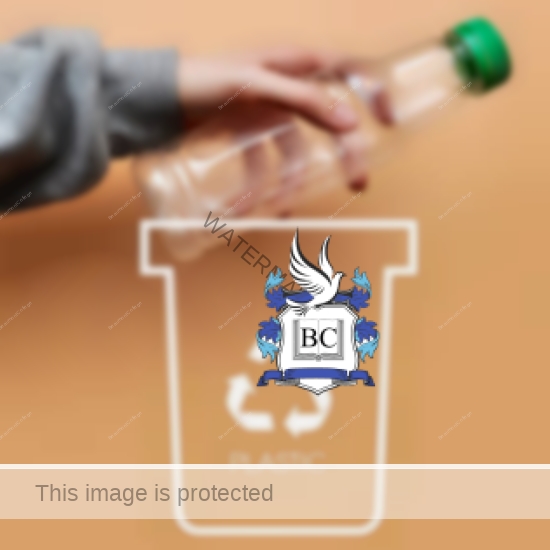
OTHER LEGAL REQUIREMENTS
Many countries have additional requirements. These may include how the the weight of the product is measured (lbs, kgs etc.), the country where the product is made, disposal regulations (hazardous or recycling etc.), copyright and trademarks and so forth.
All countries have their own legal standards for packaging and labeling. Check the rules and regulations in your home country. A search online (e.g. India Packaging Regulations) will direct you to the relevant governing body, alternatively packaging and design companies may also advise you.
AWARENESS
Juts like packaging the label should be creative to help products to stand out and gain the consumer’s attention. Persuasive attributes such as “low fat” or “vitamin enriched,” may be prominently displayed to promote the product. And of course, your company name and logo should feature clearly.
PRODUCT INFORMATION
The label should provide useful and relevant product information and instructions for use. Many products are required by law to carry a complete list of their ingredients.
This information is extremely important so that consumers can make informed decisions (e.g. allergies), nutritional labeling, and best before dates.
PRODUCT WARNINGS
If your product may be hazardous to health this needs to be mentioned. It may be that the product is toxic (such as some chemicals), cause allergies, or it may be harmful to children if swallowed (small items a child may choke on).
Other common warnings may include products that involve heat (such as irons), or electricity (such as computers).
LEGAL REQUIREMENTS
Many countries have additional requirements. These may include how the the weight of the product is measured (lbs, kgs etc.), the country where the product is made, disposal regulations (hazardous or recycling etc.), copyright and trademarks and so forth.
All countries have their own legal standards for packaging and labeling. Check the rules and regulations in your home country. A search online (e.g. India Packaging Regulations) will direct you to the relevant governing body, alternatively packaging and design companies may also advise you.
EXAMPLE: This link shows the product labeling guidelines for Australia.
LET'S RECAP
WHAT YOU'VE LEARNED
- The 3 product levels help us understand consumer needs and wants.
- Products have features, and benefits are features consumers want.
- To extend product lines we can do stretching and filling.
- Extending product lines creates a product mix.
- We can arrange our product mix into portfolios.
- To manage our portfolios we use the BCG Matrix.
- There are 5 stages to develop new products (do you recall the stages?).
- Product packaging has 4 main functions (do you recall them?).
- Product labeling has 4 main functions (do you recall them?).

Let's Help Dave
Your first client
2.1 The 3 levels of a product
As Dave’s business consultant we will get him to identify the 3 levels of his product. Each of the 3 levels will need to be described in more detail, but examples could include:
- Core Benefit: A relaxing and intimate place to eat and drink with friends, colleagues and partners.
- Actual Product: A city center location, with relaxing and up-market ambiance, that offers a wide selection of curated wines, and fine light dining, with extended opening hours on Friday & Saturday nights.
- Augmented Product: Dave has forgotten about his augmented product. Like many companies he has focused only on the actual product.
What augmented products could Dave's customers find useful, interesting or informative? (wine appreciation classes, or special events with his suppliers etc.)
2.2 Product Features & Benefits
We need to analyse ALL the features and benefits of Dave’s wine bar. For now we will just look at the physical environment or evidence (the last P from the marketing mix). A few examples include:
The Location:
Feature: City center venue.
Benefit: Easy access and close to public transport (after drinking).
The Ambience
Feature: Light Jazz Music.
Benefit: Sets the tone for a more intimate and relaxing place to meet and talk.
Thinking like a marketer: I wonder if we should have the same music, and volume for every day of the week and for all times (afternoon & evening?). How do we find out? (ask the customer!)
Don't forget, we will need to identify the features and benefits of all Dave's products such as the food menu, wine list, parking facilities, ordering etc.
We will cover designing and managing services settings (the features & benefits) in more depth in MKTG1020 Services Management).
2.3 Product Line Development
Product Line Stretching:
This is adding whole new product lines.
Dave could include the wine tasting classes (augmented product suggested above) as new paid for product if there is demand for it (remember, demand is a want that customers can afford: market demand).
Thinking like a marketer: This could be a very good way to help increase Dave’s revenue without him having to do too much work, especially if his suppliers present the classes (and it’s good for the suppliers as they can sell more wine, and increase their brand awareness).
Product Line Filling:
This is adding new variations to existing lines.
As suggested in lesson 1 Dave could extend his existing wine list with more affordable “house wine of the month” options.
Thinking like a marketer: This has 2 immediate benefits. First it offers price sensitive customers options to try Dave’s wine bar when they may usually have avoided it. Second, it allows Dave the opportunity to test what wine’s are most popular, and give customers a reason to keep coming back (to try the new wine on offer).
What other ideas can you thin of (office catering, functions and parties etc.)
2.4 Product Portfolios
As we get deeper into Dave’s business development process we can start organising his products into different portfolios. How we do this can vary depending on what makes the most sense. For example:
Day time portfolio
Dave might want to have a lunch time portfolio. This could have a variety of light meals (faster to prepare and eat on busy lunch breaks), and a variety of low alcohol wines.
Night time portfolio
He may then want to have a separate evening portfolio that includes larger 3 course meals and a different selection of wines. He may want to also include cocktails for evening customers.
2.5 BCG Matrix
As Dave’s business consultant we should encourage him to keep track of sales data for each product, profits, and customer satisfaction.
Based on this information we can then start to arrange each product into a BCG matrix.
Dave might find that certain wines are always popular (cash cows). He may also see that one of the new house wines is becoming more popular each month (star) so he can add it to the permanent menu.
But because of this new star, one of his older wines is now no longer selling well and Dave can assign this as a dog and decide whether to remove it altogether.
2.6 New Product Development
STAGE 1: Let’s see how we can develop Dave’s idea to extend his product range with wine appreciation classes (stage 1 of the product development process).
STAGE 2: We need to write a product description (idea screening). This should include the wines we want to include, the benefits (value proposition), the customers we want to target, the cost of classes and so forth.
STAGE 3: Dave can then get some feedback on the concept. He might want to give his customers a survey, or even have a test run with a small group of customers. If the feedback is good he can move onto stage 4.
STAGE 4: It’s time to now speak with his suppliers, discuss the expectations from them (e.g. the wine, and a trainer), and also what he will offer (e.g. the venue and promotions). Dave also needs to consider pricing, number of tickets available, and so forth.
STAGE 5: It’s time for Dave to commercialize his new product. He should now plan when he want’s to release the new product (start the classes). He might start before Christmas, or Valentine’s Day, and he might decide to have them every week, or month, or perhaps 4 times a year at the start of each season.
Thinking like a marketer
Dave's budget, and market demand will dictate the best answers to these questions. Generally its best to start small and grow gradually.
Secondly, Dave must consider where the classes will be held. He can have them at his wine bar or, if he has a few wine bars, he can make the classes at his biggest location.
Alternatively, if he does not have much space he might want to have the classes at his suppliers location if they have an appropriate venue. There could even be the possibility of having the classes online.
2.7 Packaging & Labelling
As we are dealing with a service (classes), there is no packaging or labelling to consider.
However, our promotional material must be sure to include all relevant information (see MKTG1040 Marketing Communications for more on this).

Let's help Dave
your first client
2.1 The 3 levels of a product
As Dave’s business consultant we will get him to identify the 3 levels of his product. Examples could include:
- Core Benefit: A relaxing and intimate place to eat and drink with friends, colleagues and partners.
- Actual Product: A city center location, with relaxing and up-market ambiance, that offers a wide selection of curated wines, and fine light dining, with extended opening hours on Friday & Saturday nights.
- Augmented Product: Dave has forgotten about his augmented product. Like many companies he has focused only on the actual product.
What augmented products could Dave’s customers find useful or informative? (wine appreciation classes, or special events with his suppliers etc.)
2.2 Product Features & Benefits
We need to analyse ALL the features and benefits of Dave’s wine bar. For now we will just look at the physical environment or evidence (the last P from the marketing mix). A few examples include:
The Location:
Feature: City center venue.
Benefit: Easy access and close to public transport (after drinking).
The Ambience
Feature: Light Jazz Music.
Benefit: Sets the tone for a more intimate and relaxing place to meet and talk.
Thinking like a marketer: I wonder if we should have the same music, and volume for every day of the week and for all times (afternoon & evening?). How do we find out? (ask the customer!)
Don’t forget, we will need to identify the features and benefits of all Dave’s products such as the food menu, wine list, parking facilities, ordering etc.
We will cover designing and managing services settings (the features & benefits) in more depth in MKTG1020 Services Management).
2.3 Product Line Development
Product Line Stretching:
This is adding whole new product lines.
Dave could include the wine tasting classes (augmented product suggested above) as new paid for product if there is demand for it (remember, demand is a want that customers can afford: market demand).
Thinking like a marketer: This could be a very good way to help increase Dave’s revenue without him having to do too much work, especially if his suppliers present the classes (and it’s good for the suppliers as they can sell more wine, and increase their brand awareness).
Product Line Filling:
This is adding new variations to existing lines.
As suggested in lesson 1 Dave could extend his existing wine list with more affordable “house wine of the month” options.
Thinking like a marketer: This has 2 immediate benefits. First it offers price sensitive customers options to try Dave’s wine bar when they may usually have avoided it. Second, it allows Dave the opportunity to test what wine’s are most popular, and give customers a reason to keep coming back (to try the new wine on offer).
2.4 Product Portfolios
As we get deeper into this business development process we can start organising Dave’s products into portfolios.
How we do this can vary depending on what makes the most sense. For example, Dave might want to have a lunchtime portfolio. This could have a variety of light meals (faster to prepare and eat on busy lunch breaks), and a variety of low alcohol wines.
He may then want to have a separate evening portfolio that includes larger 3 course meals and a different selection of wines. He may want to also include cocktails for evening customers.
2.5 BCG Matrix
As Dave’s business consultant we should encourage him to keep track of sales data for each product, profits, and customer satisfaction.
Based on this information we can then start to arrange each product into a BCG matrix.
Dave might find that certain wines are always popular (cash cows). He may also see that one of the new house wines is becoming more popular each month (star) so he can add it to the permanent menu.
But because of this new star, one of his older wines is now no longer selling well and Dave can assign this as a dog and decide whether to remove it altogether.
2.6 New Product Development
STAGE 1: Let’s see how we can develop Dave’s idea to extend his product range with wine appreciation classes (stage 1 of the product development process).
STAGE 2: We need to write a product description (idea screening). This should include the wines we want to include, the benefits (value proposition), the customers we want to target, the cost of classes and so forth.
STAGE 3: Dave can then get some feedback on the concept. He might want to give his customers a survey, or even have a test run with a small group of customers. If the feedback is good he can move onto stage 4.
STAGE 4: It’s time to now speak with his suppliers, discuss the expectations from them (e.g. the wine, and a trainer), and also what he will offer (e.g. the venue and promotions). Dave also needs to consider pricing, number of tickets available, and so forth.
STAGE 5: It’s time for Dave to commercialize his new product. He should now plan when he want’s to release the new product (start the classes). He might start before Christmas, or Valentine’s Day, and he might decide to have them every week, or month, or perhaps 4 times a year at the start of each season.
Thinking like a marketer: Dave’s budget, and market demand will dictate the best answers to these questions. Generally its best to start small and grow gradually.
Secondly, Dave must consider where the classes will be held. He can have them at his wine bar or, if he has a few wine bars, he can make the classes at his biggest location. Alternatively, if he does not have much space he might want to have the classes at his suppliers location if they have an appropriate venue. There could even be the possibility of having the classes online.
2.7 Packaging & Labelling
As we are dealing with a service (classes), there is no packaging or labelling to consider.
However, our promotional material must be sure to include all relevant information (see MKTG1040 Marketing Communications for more on this).
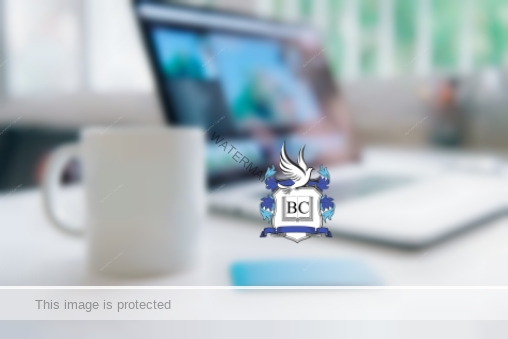
LESSON 2 COMPLETE
IN THIS LESSON: We have developed an understanding of tangible products (called 'Goods'), and some important characteristics to consider when developing & managing our product range.
NEXT LESSON: We analyse the market environment to determine where our products may be most suitably sold, the competitive landscape and how to position our business.
TO PROGRESS CLICK
MARK COMPLETE
NEXT LESSON
